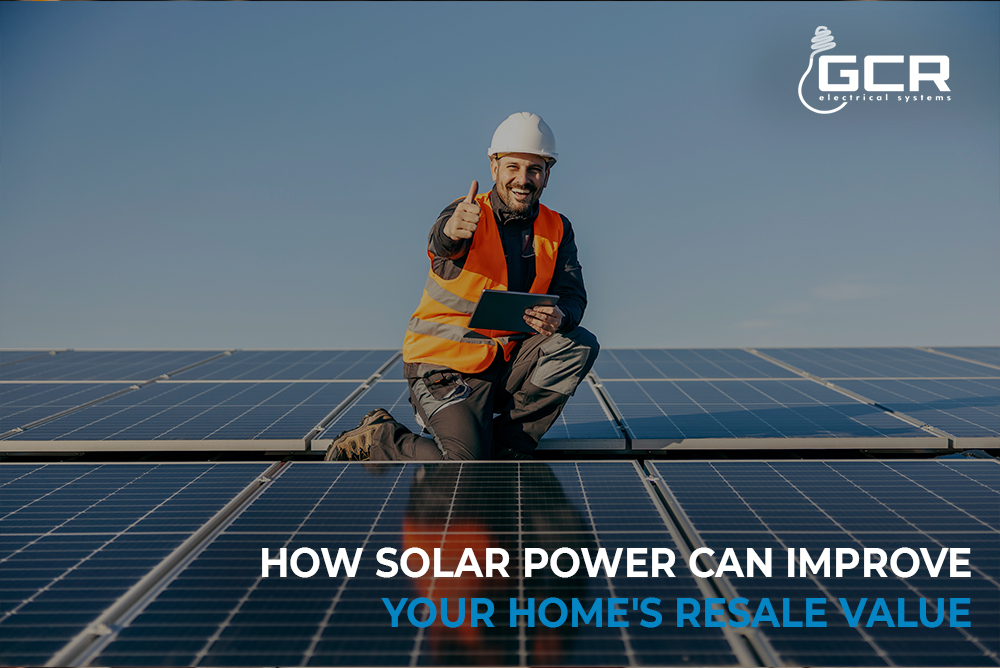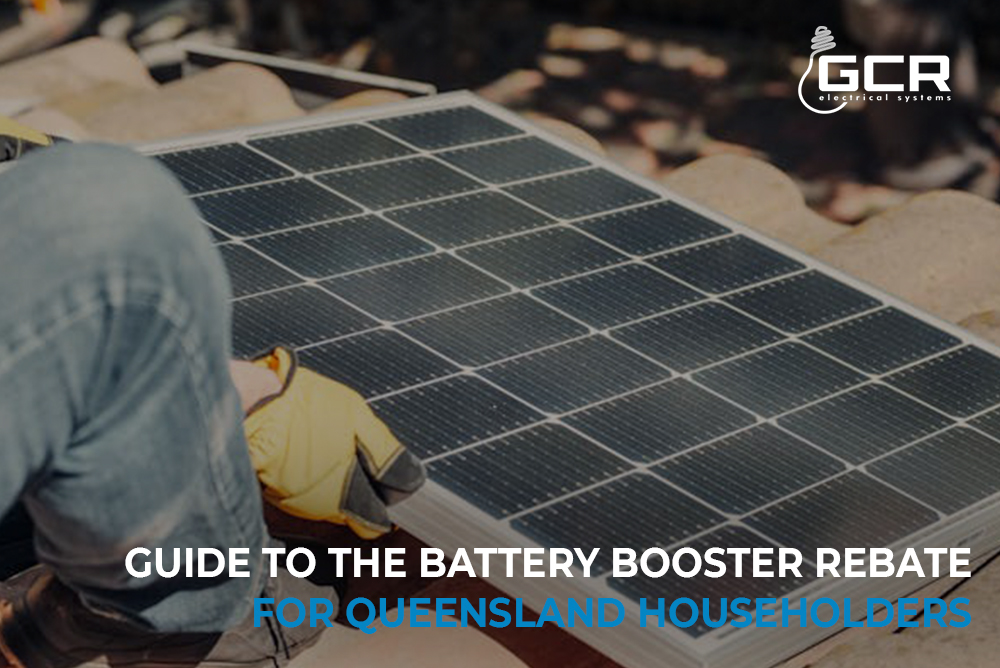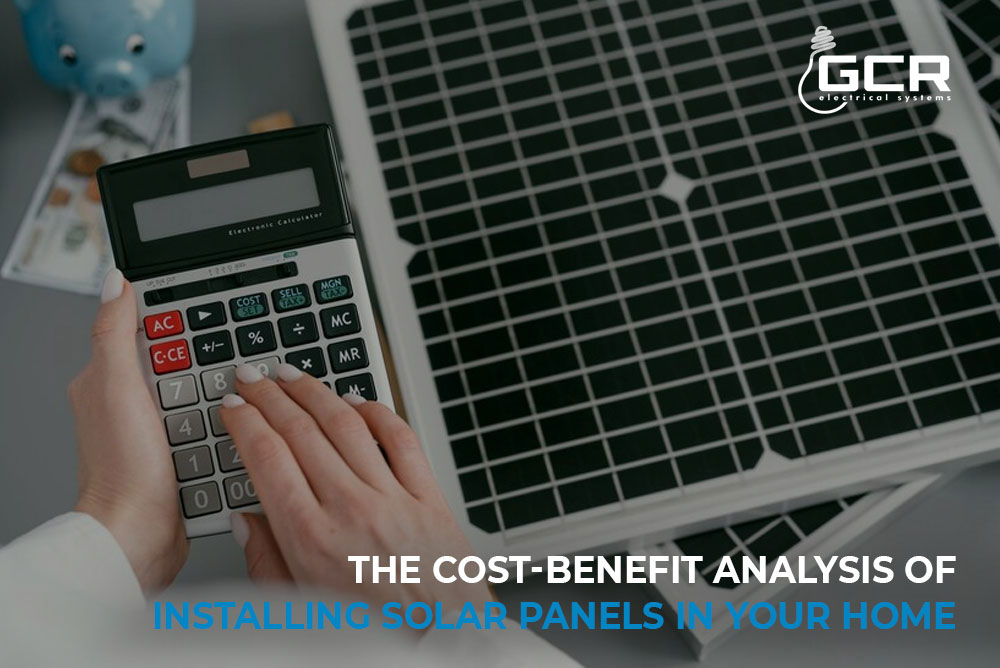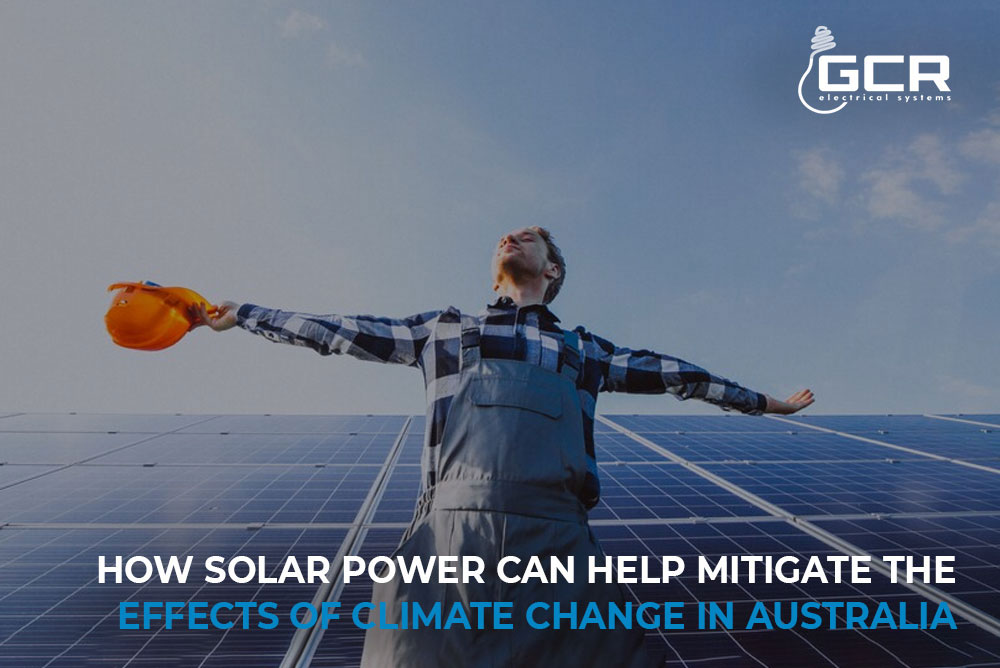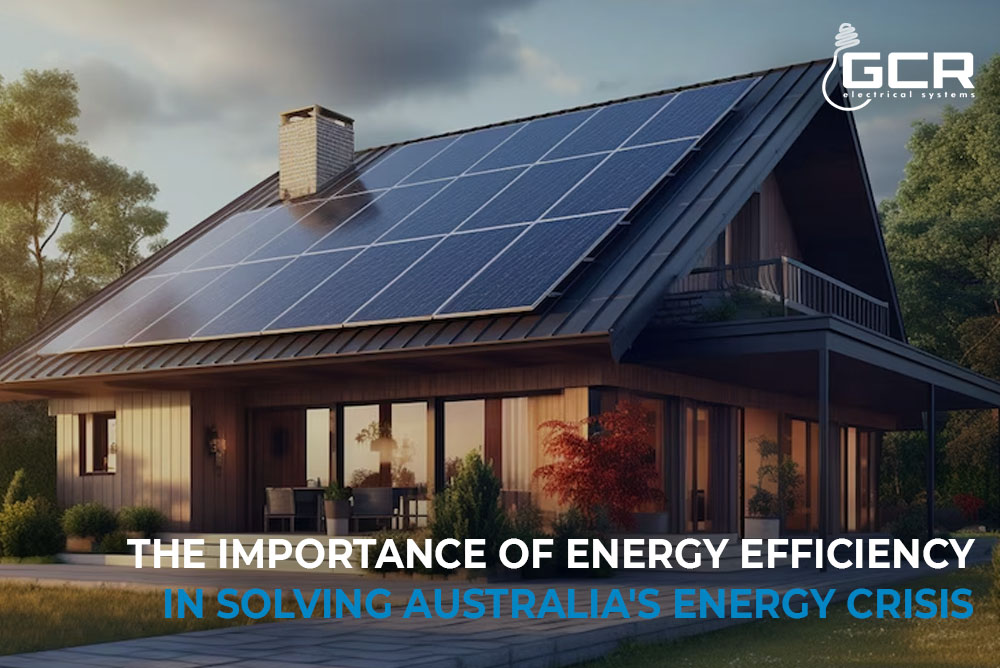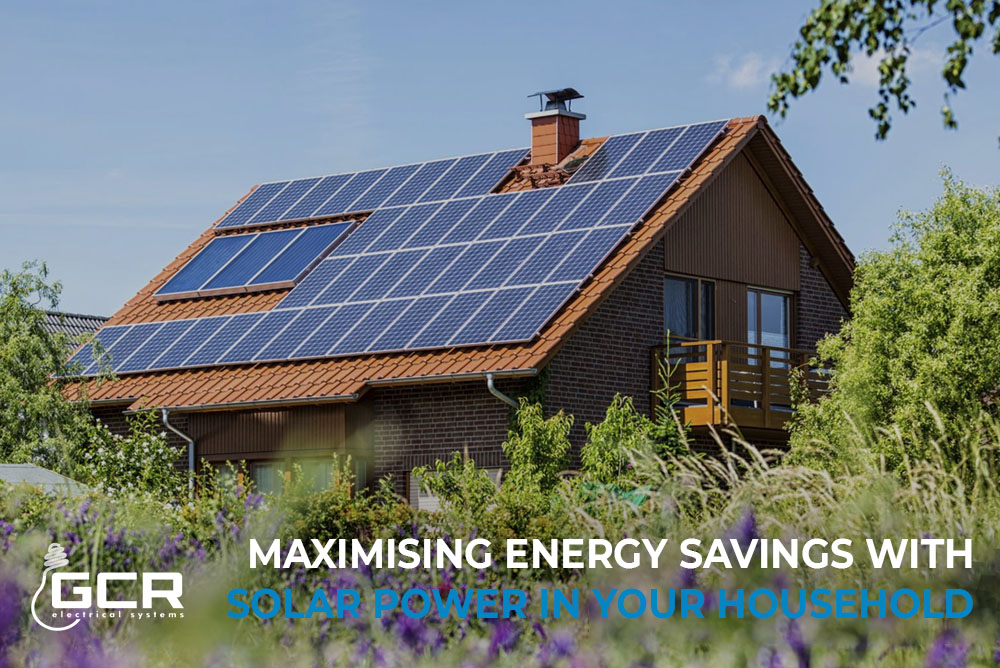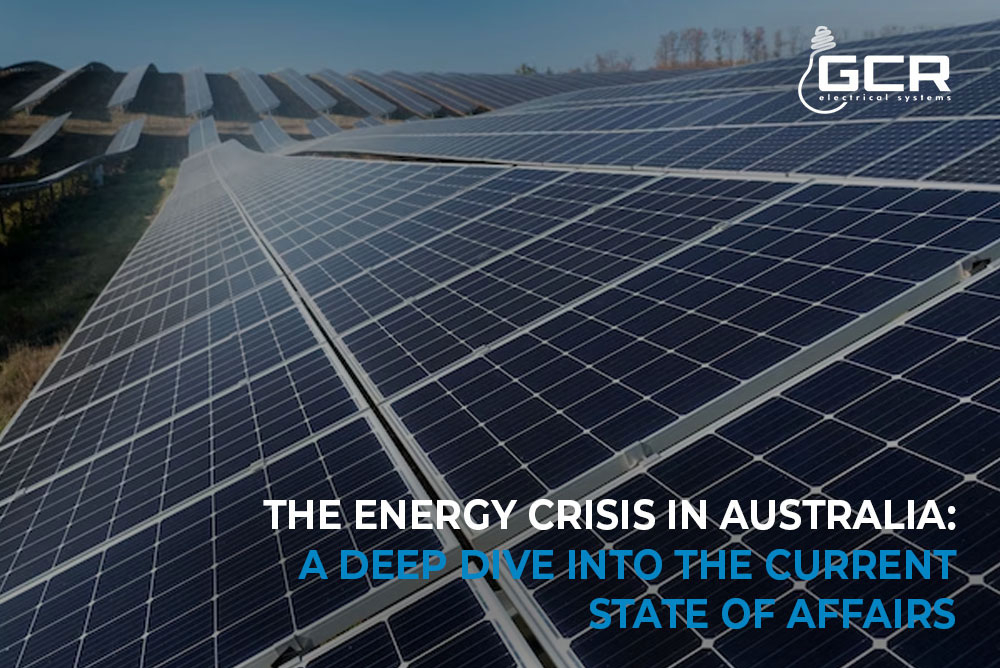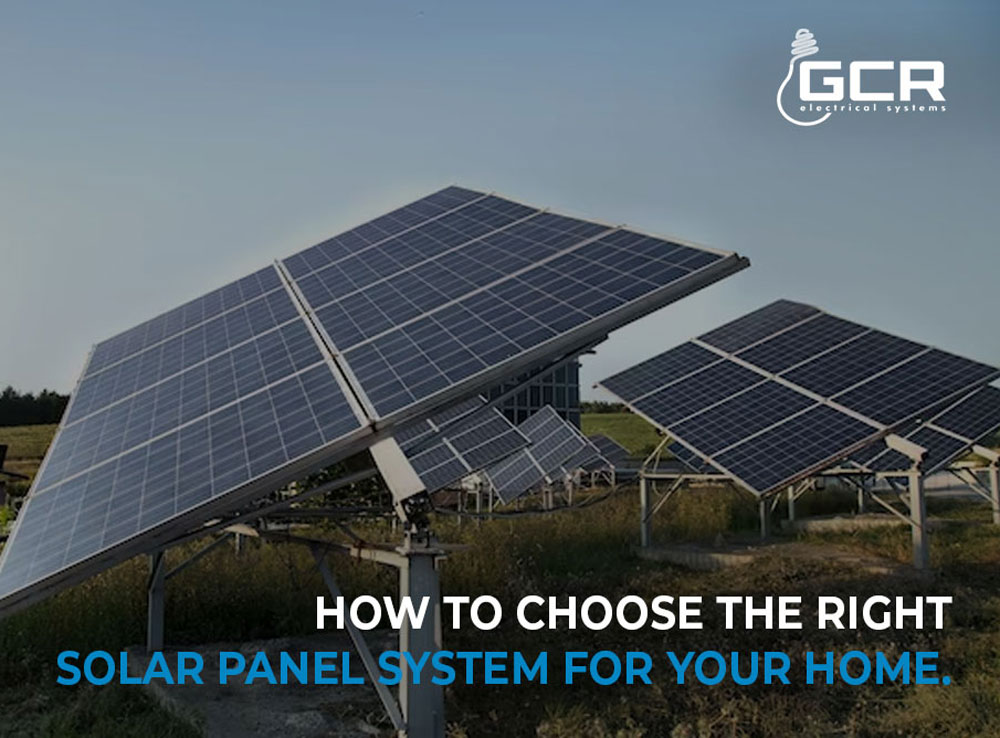
In today’s environmentally-conscious world, harnessing the power of the sun through solar panel systems has become increasingly popular. Not only does it reduce your carbon footprint, but it can also lead to significant energy cost savings. However, choosing the right solar panel system for your home can be a daunting task.
This comprehensive guide will walk you through the essential factors to consider when making this crucial decision. Please continue reading below to learn more.
1. Assess Your Energy Needs
Before diving into the world of solar panels, it’s vital to understand your energy consumption patterns. Evaluate your past utility bills and determine how much electricity your household consumes monthly. This information will serve as the foundation for determining the size of the solar panel system you need.
Understanding your energy needs is not only about looking at your previous consumption but also considering future growth. Are you planning to add new appliances or expand your home in the near future? Factoring in potential increases in energy demand ensures that your solar panel system remains efficient and effective for years to come.
2. Calculate Your Roof’s Solar Potential
The effectiveness of your solar panel system depends on your roof’s solar potential. Factors like roof orientation, shading, and available space play a significant role. Consult with a solar professional to assess your roof’s suitability and ensure maximum energy generation.
Ideally, your roof should face south, as this orientation receives the most sunlight throughout the day. However, east and west-facing roofs can still be suitable for solar panels, although they may produce slightly less energy. Shade from nearby trees, buildings, or other obstructions can significantly impact your system’s performance, so it’s essential to identify and address potential shading issues.
Additionally, consider the age and condition of your roof. If your roof needs repairs or replacement soon, it’s best to address those issues before installing solar panels to avoid complications later.
3. Determine Your Budget
Solar panel systems vary in size, quality, and price. Establish a budget that aligns with your financial capabilities while keeping in mind the long-term savings solar panels can offer. Consider financing options, tax incentives, and rebates available in your area to make the investment more affordable.
When creating your budget, remember that the upfront cost of installing a solar panel system may seem high, but it’s an investment that typically pays off over time. You’ll not only reduce your monthly energy bills but also increase the overall value of your home.
4. Choose the Type of Solar Panels
There are two primary types of solar panels: monocrystalline and polycrystalline. Monocrystalline panels are more efficient and space-saving, making them ideal for smaller roofs. Polycrystalline panels are budget-friendly and perform well in less sunny conditions. Decide which type suits your needs and budget best.
Monocrystalline panels are made from a single crystal structure, which allows them to be more efficient in converting sunlight into electricity. They tend to have a higher price point but are also more space-efficient, making them suitable for smaller roof spaces.
Polycrystalline panels, on the other hand, are made from multiple silicon fragments. While they may be less efficient than monocrystalline panels, they are typically more affordable. If you have ample roof space, polycrystalline panels can be a cost-effective choice.
Consider your location and the amount of sunlight your area receives when deciding between monocrystalline and polycrystalline panels. If you live in a region with abundant sunlight, the efficiency difference may not be as crucial.
5. Evaluate Panel Efficiency
Solar panel efficiency determines how effectively they convert sunlight into electricity. Higher efficiency panels produce more energy in limited space, but they often come at a premium cost. Consider your roof’s size and available space when choosing the level of efficiency.
Panel efficiency is a critical factor when selecting your solar panel system. Efficiency is typically expressed as a percentage, representing how much sunlight is converted into electricity. Higher efficiency panels are more effective at capturing energy from the sun.
Efficiency is especially important if you have limited roof space or want to maximise the energy generated. However, it’s essential to find a balance between efficiency and cost, as higher efficiency panels can be more expensive.
6. Research Solar Inverters
Inverters convert the direct current (DC) generated by solar panels into alternating current (AC) usable in your home. Choose between string inverters, microinverters, and power optimisers. String inverters are cost-effective but may suffer from reduced efficiency due to shading. Microinverters and power optimisers, on the other hand, offer enhanced individual panel performance and are ideal for shaded roofs.
Solar inverters are a critical component of your solar panel system. They play a crucial role in converting the electricity generated by the panels into a usable form for your home. The choice between string inverters, microinverters, and power optimisers will affect the overall performance and efficiency of your system.
String inverters are the most common and cost-effective option. They connect multiple solar panels in a series, with one inverter for the entire system. While they are generally reliable, string inverters can be less efficient if some panels are shaded or dirty.
Microinverters are a more advanced option, with each panel having its inverter. This individualised approach allows each panel to operate at its optimal efficiency, even in shaded conditions. Microinverters can result in better overall system performance.
Power optimisers are a middle-ground option. They are installed at the panel level, similar to microinverters, but they still use a central inverter. This configuration can offer improved performance in shaded conditions without the cost of microinverters.
7. Warranty and Maintenance
Pay attention to the warranty offered by the solar panel manufacturer and the installation company. A reliable warranty ensures protection against unexpected issues. Additionally, inquire about maintenance requirements to keep your system operating efficiently over its lifespan.
Solar panel warranties are essential to ensure the longevity and reliability of your system. Typically, solar panels come with two types of warranties: a product warranty and a performance warranty.
The product warranty covers any defects or issues with the physical panels themselves. It typically lasts 10 to 25 years, depending on the manufacturer. Ensure that the manufacturer offers a product warranty with at least 25 years of coverage.
The performance warranty guarantees that your solar panels will maintain a certain level of efficiency over time. This warranty is crucial because it ensures that your panels will continue to generate electricity at a specified rate. Most performance warranties guarantee that the panels will produce at least 80% of their rated output after 25 years.
In addition to warranties, consider the maintenance requirements of your solar panel system. While solar panels are relatively low-maintenance, they still require occasional cleaning and inspections. Ensure that you understand these maintenance needs and are willing to perform them or hire a professional.
8. Consider Aesthetics
Solar panels come in various designs and colours. If aesthetics are a concern, explore options that blend seamlessly with your roof’s appearance. Some solar panels are designed to be visually appealing, making them an excellent choice for homeowners who prioritise curb appeal.
The appearance of solar panels has evolved over the years. While traditional solar panels are typically blue or black with a noticeable grid pattern, there are now more aesthetically pleasing options available.
Some manufacturers offer solar panels with sleek, all-black designs that blend well with most roof types. These panels have a uniform appearance and a lower profile, making them less obtrusive.
In addition to the panel design, consider the mounting and racking system. Some systems allow for flush mounting, which positions the panels closer to the roof and creates a cleaner look. Discuss these aesthetic considerations with your installer to find the best option for your home.
9. Environmental Impact
For environmentally-conscious consumers, researching the environmental impact of solar panels is crucial. Look for panels that are manufactured using sustainable practices and materials. Consider the product’s lifecycle, from production to disposal, to ensure it aligns with your eco-friendly values.
The environmental impact of solar panels goes beyond their ability to generate clean energy. It also includes how they are produced, what materials are used, and how they are disposed of at the end of their life cycle. Here are some factors to consider when evaluating the environmental impact of solar panels:
Production Process: Look for solar panels that are manufactured using sustainable practices. Some manufacturers prioritise reducing emissions and waste during the production process. Additionally, consider panels that are made in facilities powered by renewable energy sources.
Materials: Investigate the materials used in the construction of the panels. Some panels incorporate recycled or eco-friendly materials, reducing their environmental footprint. It’s also essential to consider the source of raw materials and whether they are responsibly sourced.
Energy Payback Time: This term refers to the amount of time it takes for a solar panel to generate enough clean energy to offset the energy used during its production. Panels with a shorter energy payback time are considered more environmentally friendly because they recover their energy investment faster.
Recycling and Disposal: Inquire about the recycling and disposal options for solar panels at the end of their life cycle. Many panels are recyclable, and responsible disposal methods ensure that they don’t contribute to environmental waste.
Carbon Footprint: Some manufacturers calculate and disclose the carbon footprint of their solar panels. This information provides insight into the panel’s overall impact on reducing greenhouse gas emissions.
When evaluating the environmental impact of solar panels, it’s also essential to consider the broader benefits of transitioning to solar energy. By reducing your reliance on fossil fuels, you contribute to a cleaner environment and help combat climate change.
10. Choose a Reputable Installer
Selecting the right installer is as important as choosing the solar panel system itself. Research local installers, read reviews, and request multiple quotes. A qualified and experienced installer will ensure proper system design, permitting, and installation, guaranteeing optimal performance and longevity.
Choosing a reputable installer is a critical step in the solar panel installation process. Here are some essential factors to consider when selecting an installer:
Experience: Look for an installer with a proven track record and years of experience in the industry. Experienced installers are more likely to deliver quality work and navigate potential challenges effectively.
Certifications: Check if the installer holds relevant certifications and licences. Certifications from organisations like the North American Board of Certified Energy Practitioners (NABCEP) indicate a commitment to professionalism and quality.
References and Reviews: Ask the installer for references from past customers and read online reviews. Hearing about the experiences of other homeowners can provide valuable insights into the installer’s reputation.
Multiple Quotes: Request quotes from multiple installers to compare prices, services, and warranties. Avoid choosing the installer solely based on the lowest price; consider the overall value and quality of their work.
Warranty and Support: Inquire about the warranty and support offered by the installer. A reputable installer should stand behind their work and provide ongoing support for your solar panel system.
Local Knowledge: Choose an installer familiar with local regulations, permitting processes, and utility policies. Local knowledge can streamline the installation and ensure compliance with regional requirements.
Recommendations: Seek recommendations from friends, family, or neighbours who have installed solar panels. Personal recommendations can help you find a trusted installer.
Interview: Schedule interviews or consultations with potential installers to discuss your needs and ask questions. Pay attention to their responsiveness, professionalism, and willingness to address your concerns.
Final Thoughts
Choosing the right solar panel system for your home is a significant decision that can positively impact your energy bills and reduce your carbon footprint. By assessing your energy needs, evaluating your roof’s potential, determining your budget, and considering factors like panel type, efficiency, and warranty, you can make an informed choice.
Remember that investing in solar panels is not just about cost savings; it’s about contributing to a more sustainable future for all. The decision you make today can lead to a brighter, cleaner, and more energy-efficient tomorrow for your home and the planet.
If you’re looking to save money on your power bills using solar power, speak to us at GCR Electrical Systems. Our team of professionals can provide expert advice, installation services, and maintenance support to ensure you’re using your solar energy efficiently and safely so you can save more money on your power bills.
Please contact us today at (07) 4120 7004 or leave an enquiry.

